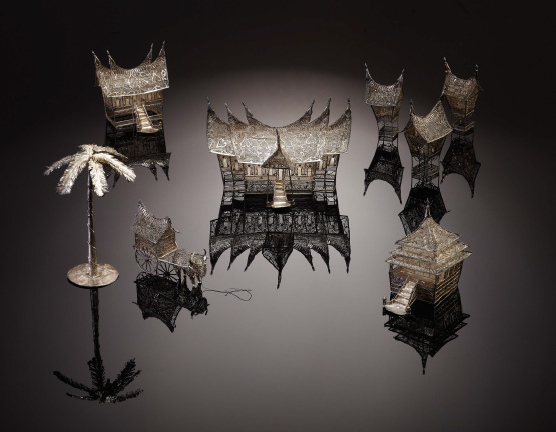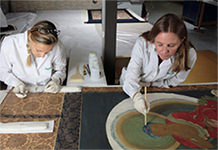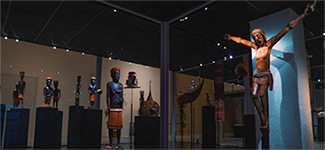> OUR PROJECTS > ANIMA MUNDI ETHNOLOGICAL MUSEUM
ANIMA MUNDI ETHNOLOGICAL MUSEUM
January 2021
Anima Mundi is the Ethnological section of the Vatican Museums. The 80,000 objects in the collection display a selection of works representing the artistic, cultural, and spiritual traditions and testimonies of non-European peoples. To name a few of the many works, the collection includes totems, shields, feather headdresses, and painted eyes peeking out behind wooden masks.
These objects and the cultures that they represent are the real protagonists of the Ethnological section. The mission of this museum is to feature the diversity of beauty, preserve it from the threats of extinction, and share with all a world of inclusion, creativity, and heritage.

The history of the Vatican Ethnological collection began in 1692 when Pope Innocent XII received various Pre-Columbian objects. Those works would later become part of Cardinal Stegano Borgia’s (1731-1804) collection. He had a deep passion for “exotic curiosities”, and he displayed them within the Vatican. The Pontiff received objects and works of art from every corner of the globe, and the collection continued to grow over time.
In 1925, Pope Pius XI inaugurated a temporary exhibition that presented objects, cultures, and religions of the world according to geographical region. With more than 40,000 items and artworks
on display, and millions of visitors who attended the show, the Pontiff decided
to transform this event into a permanent exhibition. Thus, the Missionary Ethnological Museum was born, and Father Wilhelm Schmidt, the best known Catholic Ethnologist of the twentieth century, was the first director. The museum, housed in the Lateran Palace until the beginning of the 1970s, was then moved to its current home, underneath the Pius Christian Museum.
THE RENOVATION OF ANIMA MUNDI
After nearly half a century, it became evident that the present display areas and depositories posed risks to the integrity of the objects that are all made of perishable organic materials. Thus, to optimize their conservation, these works of art should be in climate-controlled spaces that provide ideal conditions. Additionally, their beauty should be visible in totality.
So now, glass atrium cases will benefit from the natural light that passes through the sunken patios of the Zitella Courtyard and show the objects in a lucid 360 degrees. This transparent installation aims to place them effectively in an open dialogue among themselves and the visitors.
Upon its completion, the Anima Mundi will cover almost 7000 square meters and contain over 700 meters of a walkway with galleries dedicated to different geographical areas (Africa, The Americas, Asia, Australia, and Oceania).
Even the new upper depositories will be encased in transparent glass, offering a glimpse of the artifacts in storage.
Neither hidden nor tucked away, the new Polymateric Restoration Lab will also be encased with a transparent wall to give visitors visual access to the restorers who work within the Ethnological gallery space. It’s an opportunity for visitors to gain an intimate viewing experience and see these professionals address the environmental threats posed to the works.
 
Please contact us for Giving Opportunities.
The Patrons of the Arts in the Vatican Museums wish to thank KAYO & RYUSEI NISHIMOTO for their generosity in supporting the Asia Sector of Anima Mundi.
|